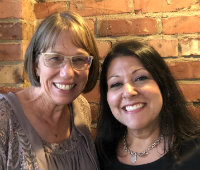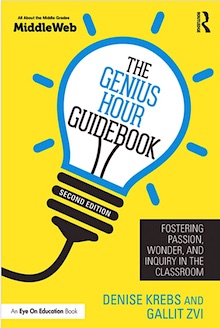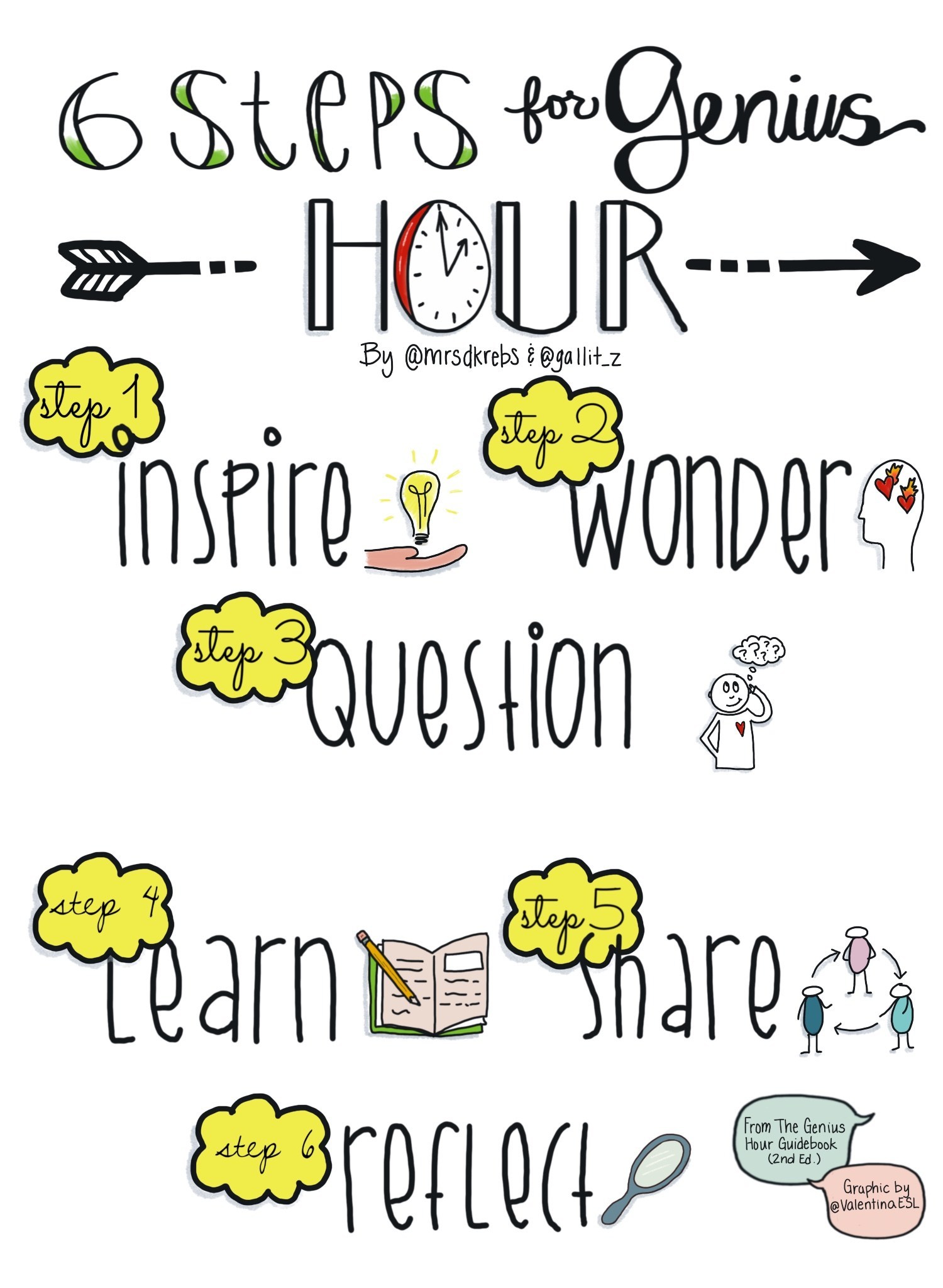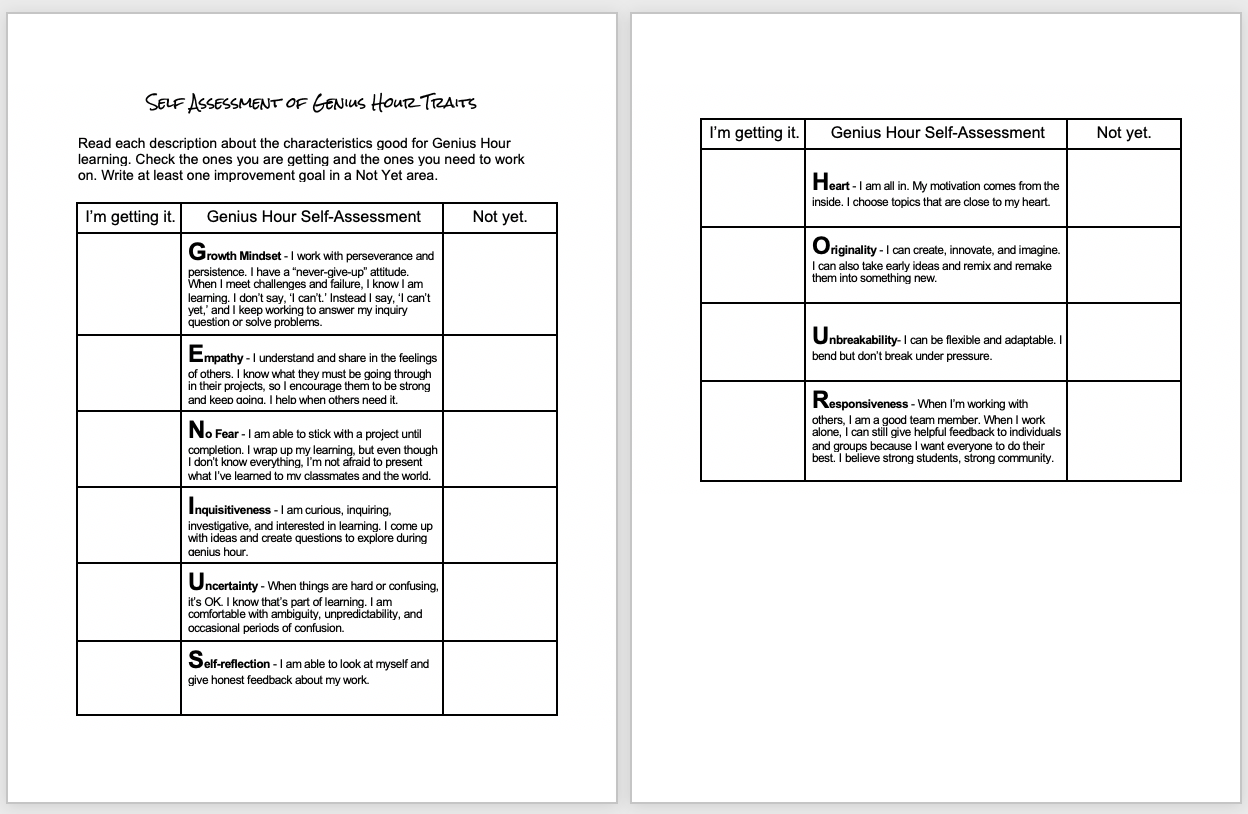How You Can Support Genius Hour At Home

When school began last fall, teachers and students nestled into classrooms as usual, built up our community cultures, and began to learn together. Then, suddenly, with little warning in March and April, we were thrown into a state of emergency and found ourselves in something called “remote education.”
One day we were in school and the next day we were not. But one thing has remained the same: our greatest responsibility is to support the relationships that we have nurtured and continue to build with our students and families.
We must show kindness, compassion and above all, do no harm to our children with our lessons, our expectations, and our grading policies. Children are deep into a life-changing experience now, and we can have a part in shaping it for their good.
That’s where Genius Hour comes in. What is Genius Hour? It’s a learning opportunity that gives students time to pursue their passions, to explore interesting ideas, and to create something that they choose and will be proud of.
Once they’ve accomplished their goal, then they get to share their discovery or creation with the rest of their learning community and perhaps the world. We believe if you do Genius Hour with your students, it will be one of everyone’s most memorable lessons during this emergency learning experience.
UPDATE FROM DENISE: “Since there are so many of us in this together, learning to do Genius Hour at home, I thought I would share the videos I made for my students.” Visit her blog here!
Six Steps for Genius Hour – at Home!
In the second edition of The Genius Hour Guidebook, we have clearly identified the six steps you can take to put Genius Hour into practice. In this article we will show how you can tweak these “6 steps for Genius Hour” – inspire, wonder, question, learn, share, and reflect – to fit into your emergency learning program.
STEP 1 – INSPIRE
We always start Genius Hour with inspirational videos and picture books that we share with our students. And we still recommend you do this, but we also challenge you to use yourself as inspiration.
Make a video of yourself pursuing a “Genius Hour” project (or tell them live if you are working synchronously). In the video tell, or better yet, show your students the at-home things you are learning.

Then end your inspirational video by telling the students they are going to get to do genius hour, and leave them with this question: “If you could learn anything, what would you choose?”
STEP 2 – WONDER
The next step is getting the students to wonder. Let’s face it, students are not always accustomed to choosing their own learning adventures. Teachers often tell them what they’ll be learning next. The wonder step helps them to take ownership of their own learning. It helps them articulate what they love to learn and are curious about.
We let our students share their wonders with the class because our students’ curiosity will grow when they see their peers’ ideas. One way they can do this at home is to complete a wonder page, where they list the things they are good at, wonder about, and what they love to learn and do.

During our last Genius Hour chat on Twitter, where the topic was genius hour done virtually, Andi McNair reminded all of us about using Wonderopolis. She shared this: “I absolutely love @wonderopolis as a way to encourage wonder and curiosity. I absolutely think we can wonder with them.” We agree. If you haven’t used Wonderopolis yet, this might be the perfect time to check it out and allow students to explore their own wonders during home learning.
Kathryn D. Brown (@Bubble_This) made a great point in our virtual learning chat in this Tweet, “I think the longer we are out of the classroom directly, the more the idea of wondering and pursuing interests fits the individual emotional needs of students.”
Yes, we definitely need to keep in mind the emotional needs of our students. Thank you, Kathryn, for your wise words.
STEP 3 – QUESTION
In the question step, students commit to just one question they will answer during Genius Hour. That’s why their question should be a big, non-googleable question. Paul Solarz (@PaulSolarz) has shared a lot of resources about PHAT (Pretty hard and tough) questions. In a Tweet at our recent chat he shared: “My 4th/5th graders come to me with their strongest worded Essential/PHAT Question & I help them revise it so it can take them successfully through a learning path….” Here is a list of hundreds of essential/PHAT questions that Paul’s students have developed over the years.

Getting parent approval is probably a good idea during this Genius Hour at Home session. Children and parents will need to communicate with each other about the topics and possibilities.
For example, a child might want to create a cooking show for their Genius Hour project. Their parents under normal circumstances would be happy to support their child doing this, but limited access to food for that family right now may prevent that possibility. Instead the child might choose to do a research-based project about their food interest. If you are using a school-home program like Freshgrade with your students, perhaps have your kids post their questions there and then ask their parents to post an encouraging comment underneath.
We also recommend having your students share their questions with the whole class so they can encourage each other and ask questions to help move projects forward. This is another place where apps like Padlet and Flipgrid come in handy. Or if your class is already blogging using Weebly, Edublogs or Kidblog, or any platform you’re comfortable with, they can write a blog post about their project question and then comment on each other’s posts that way.
There are so many ways that students could share. For example, many schools are using Microsoft Teams, so you could start a thread about Genius Hour there and have students comment that way. Or if you’re looking for something simple, try Padlet. It worked well for Denise’s students the first time they tried it from home.
When we discussed this step during our last Genius Hour chat on twitter, @DRich0696 reminded us that not every class uses this step. Some teachers allow students to pick topics instead of questions. He said in a Tweet: “We use #geniushour as a capstone so Ss need to tie their research to our standards. The standards are very broad so anything can be applied. Sometimes questions guide them but it’s not required.”
Other teachers chimed in and stated that they thought a question really helped students focus. We agree which is why we have included this step. But as we have said before, you know your students best and if you think a topic rather than a question suits your context, then go for it!
STEP 4 – LEARN
Here you can give one, two, three, or four weeks for learning time, depending on your situation. They can have time to build that Lego creation, to write poems, build a bridge, code a game, or whatever they are trying to do.
During this time we recommend having your students communicate with you about the process. You will want these updates so that you can ensure kids are on the right track. Again, we suggest just using the same programs that your class is already familiar with. It can be a weekly blog post, or Freshgrade updates, Seesaw, Teams, etc.

If you are meeting with your class weekly on camera with a program like Teams or Zoom, you could give the mic to each student to do a quick 30-second share about how things are going with their projects. Then students could type encouraging comments and/or questions they have in the discussion sidebar.
Some students will need more support. For the students who need more conferencing, we encourage you to call and talk to them personally. Help them answer questions or get past impediments to their progress.
When we work on Genius Hour in our classrooms with our students, we allow them to work with a partner if they are both passionate about a topic. When thinking about Genius Hour for home learning, this is still entirely possible for older students – they can use FaceTime, texting, and/or programs like Google Drive so that they can write together in real time.
Our friend Hugh McDonald shared in a Tweet that it is a “great opportunity to collaborate & find their way down the rabbit hole with a peer” and that “students in our class will be collaborating using Microsoft Tools.” It is totally doable if they have access to programs like that! Many students love collaborating, so we still allow partners even when projects are being done at home.
Here are some Genius Hour at Home projects that Denise’s ELL students are doing right now: piano playing, Lego creations, language learning, science experiments, cooking, and organizing.
Step 5 – SHARE
Finally, we get to the sharing. If their projects are incomplete or the end product failed, that is fine. In sharing, we are just sharing the Genius Hour process. What did we learn? What might we do differently if we did it again? We all know that in failures we can learn so much.
This step is the best for a lot of learners and teachers! Especially since we are all at home, they love seeing one another’s projects. In fact, Denise has observed that her students pay even closer attention to their classmates’ Flipgrid sharing than perhaps some of them do when they are in class. The views, likes, and replies are a sweet way for the learners to get feedback and make contact with friends.
Students love having a choice in how they share. It can be with or without technology and as varied as…
A photo collage
- A how-to video, Tic Toc, etc. of their learning adventure
- A series of blog posts or podcasts
- A paper book – poetry, flip book, picture book or whatever
As we have said above, use the platforms that you are already using for the rest of your home learning program: Teams, Zoom, Flipgrid, or whatever. If you are using a program that only lets you communicate with the student and doesn’t allow the students to view one another’s work (like Freshgrade), you will need to think about what else you can use so that your students can learn from each other!
STEP 6 – REFLECT
Reflection is key in the learning process. We ask our students to reflect while they are working on their Genius Hour projects, but also at the end. Denise is currently using two simple questions for at-home reflection:
- What was your favorite part of Genius Hour? and
- What is something important you learned?

She also asks parents to provide feedback on a Google form. It is important to hear from them because they are key players in the process of Genius Hour at home. If it’s working for them, we know that we will do it again. As we take their feedback to heart, we can make it better for the next round of Genius Hour, at home or at school.
If you are using this Self-Assessment of Genius Hour Traits (included in the second edition of The Genius Hour Guidebook), then you can also ask your class to reflect on one or two of the Genius Hour attributes. This would be great for older students or for students who have already been introduced to the rubric and its language.
We hope you’ll find time to experiment!
That’s our “6 Steps for Genius Hour” at-home edition. If you are new to Genius Hour, this really is the perfect time to start as there is just enough time left in the school year for most students to work on a meaningful project.
We would love to help however we can as you extend your Genius Hour learning into this season of “emergency” learning. Please reach out to Gallit (@gallit_z) and Denise (@mrsdkrebs) on Twitter or at the Genius Hour Guidebook resource website. You can also tweet about your Genius Hour learning using the hashtags #geniushour and #geniushourathome and by tagging @geniushour.
Go forth and inspire, wonder, question, learn, share and reflect!
Credit: Six Steps graphic courtesy of Valentina Gonzalez.



































Wonderful steps to follow to inspire and motivate both teachers and students! Thanks so much for this excellent plan to encourage education!
Thanks for sharing this! My 5th-grader seems to be plenty busy during learning-during-quarantine (in addition to regular schoolwork, she and some friends are meeting online daily to work on a novel they’re co-writing). But we still have almost 2 months of school left, so I imagine there will come a day when she needs something new to work on independently.